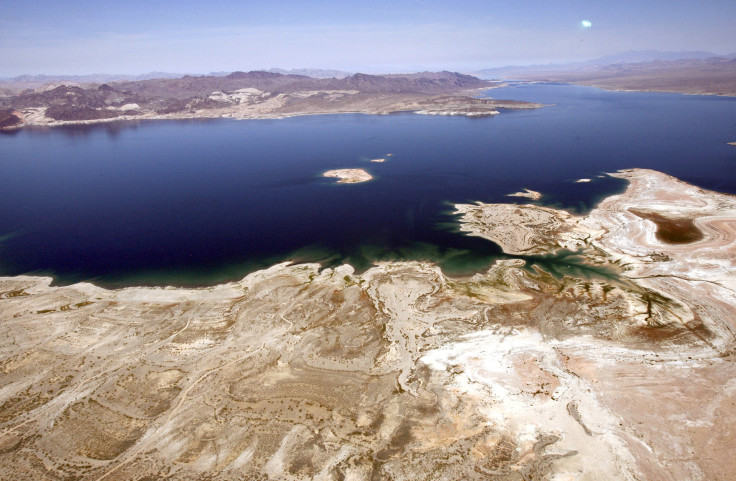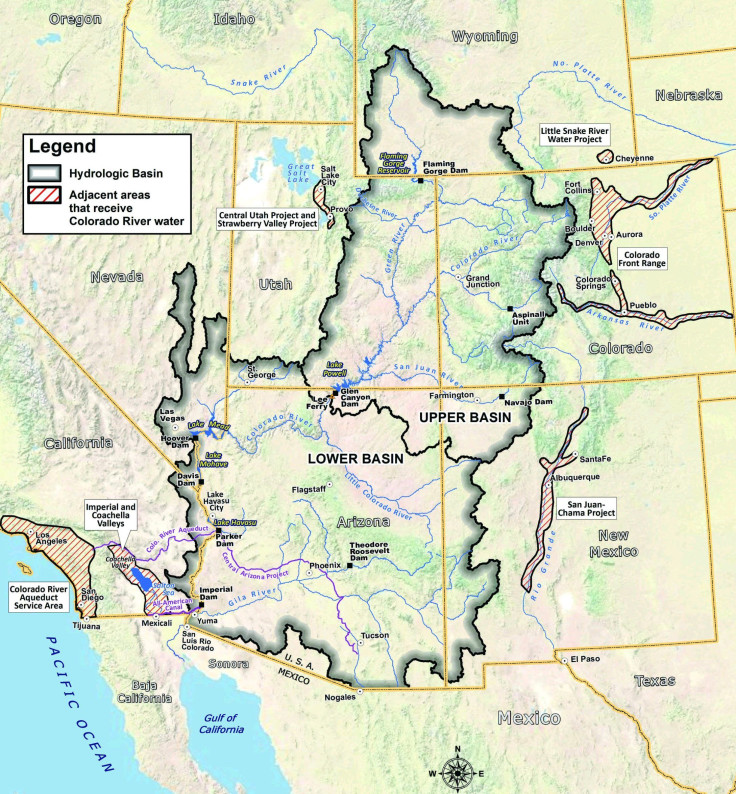Droughts In California, US Southwest Help Drain 17 Trillion Gallons Of Water From Colorado River Basin In Last Decade

The Colorado River basin has lost 17 trillion gallons of water in the past decade due to drought and ever-rising demand, according to data gathered from NASA satellites. The disappearance threatens to jeopardize the long-term water supplies of the seven U.S. states and parts of Mexico served by the basin, researchers said.
The study, released Thursday by NASA and the University of California at Irvine, is the first to quantify how much groundwater people in the Southwest are using during the region’s current drought, the Associated Press reported.
“This is a lot of water to lose. We thought that the picture could be pretty bad, but this was shocking,” Stephanie Castle, the study’s lead author and a water resource specialist at UC Irvine, said in a statement.
Unlike the water in the rivers and lakes, whose levels are tracked and managed by the U.S. Bureau of Reclamation, underground water supplies are poorly documented and ill-managed, so it's difficult for scientists to know how much of the water is still available. “We don’t know exactly how much groundwater we have left, so we don’t know when we’re going to run out,” Castle said.
Using NASA satellites, the researchers found that since 2004, the Colorado River basin has lost 53 million acre feet, or 17 trillion gallons, of water. That’s nearly twice the volume of Nevada's Lake Mead -- the nation’s largest reservoir -- and is enough to supply more than 50 million households with water for a year. More than 75 percent of the total water losses was from groundwater, the study said.
While above-ground water sources can be replenished by rainfall, groundwater sources can become so depleted that they may never refill, Castle told the AP. In Southwestern states, the loss of groundwater is emptying the reserves that protect farmers, consumers and ecosystems during prolonged periods of drought.
The Colorado River basin -- the largest in the Southwest -- supplies water to about 40 million people in California, Arizona, Colorado, New Mexico, Nevada, Utah and Wyoming, as well as to people in Mexico. The basin, which irrigates about four million acres of farmland on both sides of the border, “is the water lifeline of the western United States,” Jay Famiglietti, the study’s co-author and a senior water cycle scientist at NASA’s Jet Propulsion Lab, said in a statement.

Yet since 2000, the basin has suffered from prolonged and severe drought and has experienced the driest 14-year period in the past hundred years, according to the U.S. Bureau of Reclamation. Lake Mead water levels reached historic lows this month, dropping to levels not seen since the construction of the Hoover Dam in the 1930s.
California in particular is in the grip of a crippling three-year-long drought that researchers said could cost the state’s economy $2.2 billion this year, mainly from lost crop revenues and declining values of livestock and dairy.
Scientists are generally reluctant to peg specific weather and climate events to global warming, which is caused by the massive release of human-made greenhouse gas emissions. Over the long term, however, they agree that California and other arid regions will likely experience longer and more severe droughts in the coming decades because of global warming, which will threaten groundwater sustainability.
In the Southeast, “Climate change poses challenges for an already parched region that is expected to get hotter and, in its southern half, significantly drier,” according to the National Climate Assessment, a U.S. government report. “Severe and sustained drought will stress water sources, already over-utilized in many areas, forcing competition among farmers, energy producers, urban dwellers and plant and animal life for the region’s most precious resource.”
Famiglietti of NASA said that in the future, declining snowpack and population growth in the region could threaten the basin’s long-term ability to meet its water allocation commitments to the seven U.S. states and Mexico. “The extent of groundwater loss may pose a greater threat to the water supply of the western United States than previously thought,” he said.
© Copyright IBTimes 2024. All rights reserved.




















